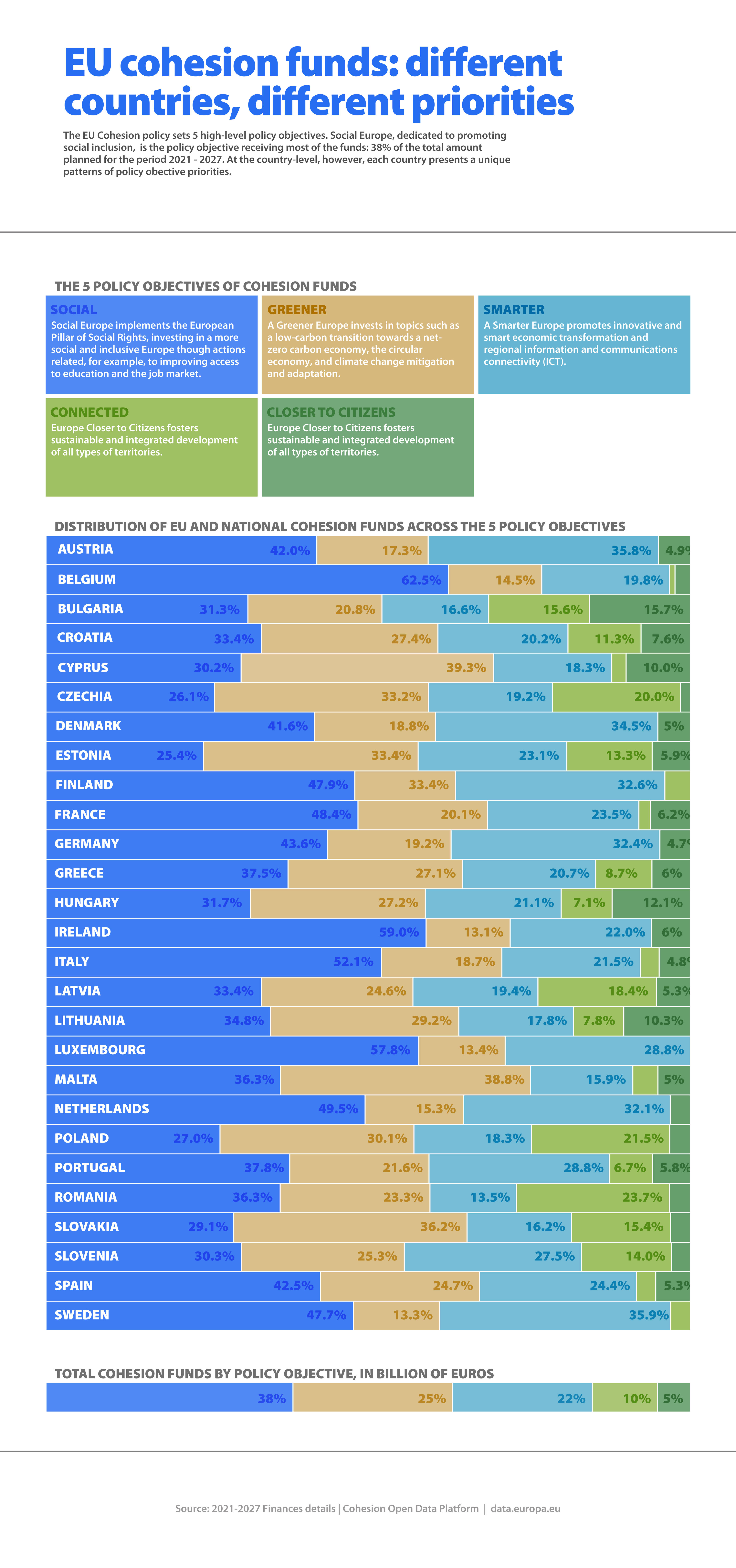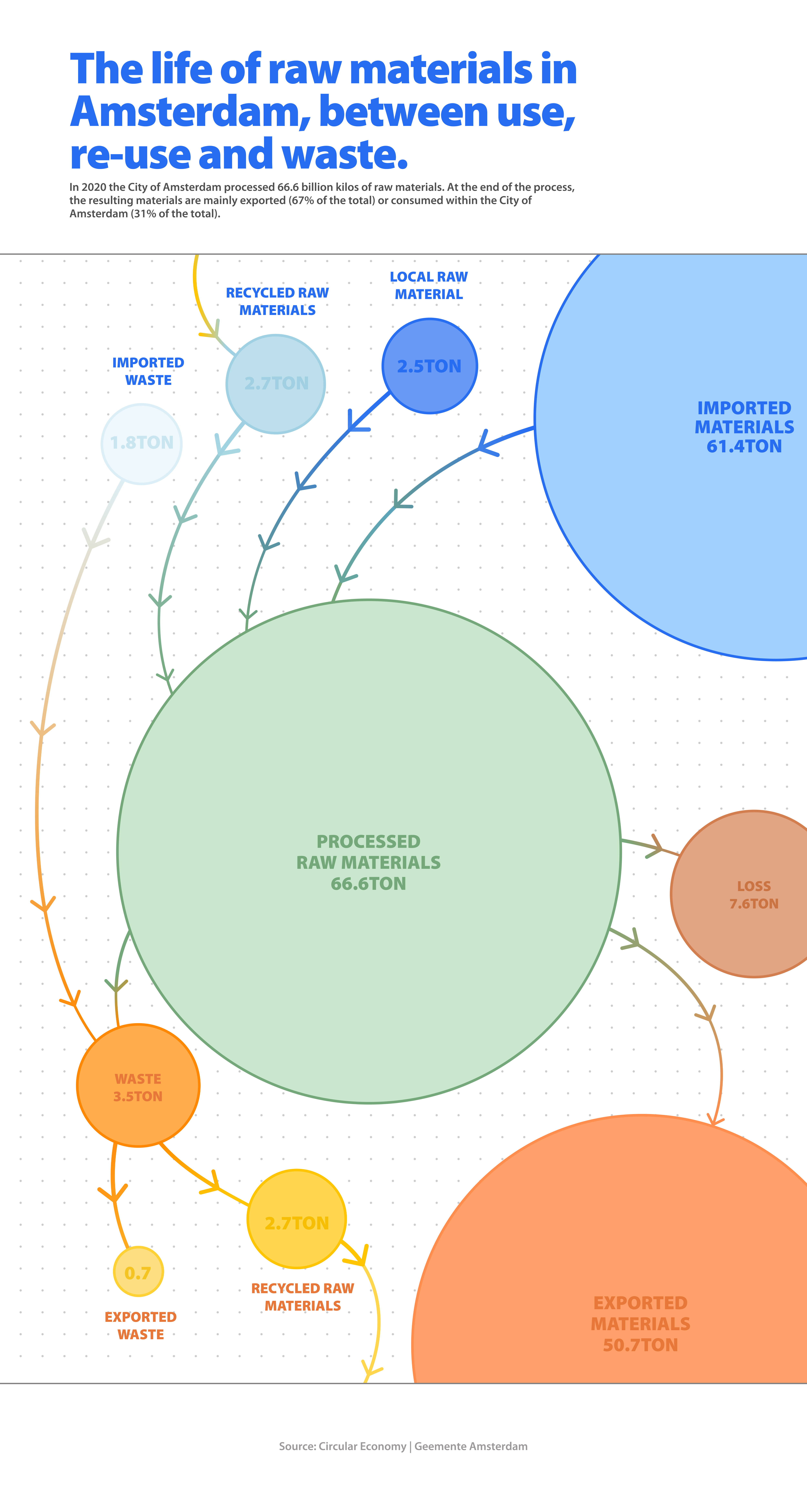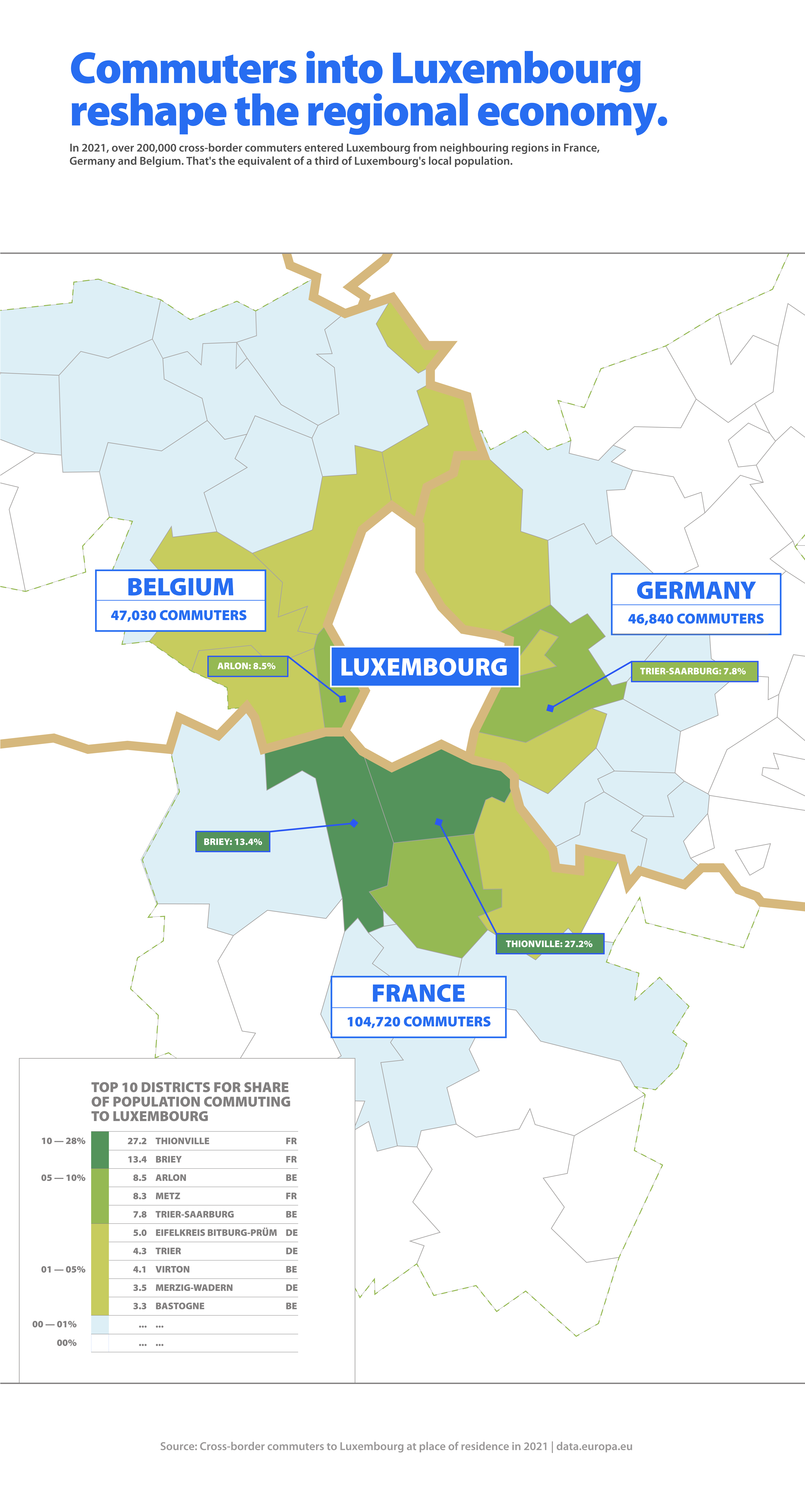Open data as an enabler to regional development and better cohesion in Europe
Exploring datasets for regional and local challenges in Europe
The European Union’s cohesion policy helps regional and local communities improve the quality of life of its citizens. Creating jobs, having competitive businesses, fostering economic growth, and developing sustainably are all targets supported by the EU’s cohesion policy. But what can be done to help ensure there are no gaps between countries and between different areas and regions in the same country? Initiatives powered by open data can help regions reach their full potential, benefiting the region and the overall living standards and prosperity in the EU.
How does this look in practice? This data story explores the impact of open data on regional development in Europe. Three real examples showcase how regional and local data can help regions thrive through initiatives that improve waste management, shed light on the cross-border labour market, and help in urban planning. By the end of this data story, you will see how regional and local data can support policy goals and the importance of open data to make it possible.
Cohesion policy in a nutshell
The 2021–2027 EU cohesion policy has five core objectives. Cohesion means building social and inclusive communities that enshrine the European Pillar of Social Rights (social Europe). This should come together with the development of low-carbon industries and economies tackling climate change (greener Europe). Another objective is to promote innovative and smart economic transformation of regional information and communications technologies (smarter Europe). Imagining the future of our regions and cities means lowering our negative impact on the planet and using more sustainable mobility (connected Europe). In the end, regional policies hope to foster sustainable and integrated development of all types of territories (Europe closer to citizens). Figure 1 showcases how countries are using EU spending on cohesion policies according to these core pillars.

Figure 1. Spending on the five pillars of the EU’s cohesion policy per EU Member State (source: Cohesion Open Data platform / data.europa.eu)
From theory to practice: understanding the importance of open data for regional cohesion
The power of open data for regional development is best demonstrated through real-life use cases. Below we consider the topics of waste management, the labour market and urban planning to showcase how local data can be used in practical initiatives for the local community.
- Regional open data to improve waste management and contribute to a circular economy
Where does your waste go? The garbage is collected and taken to a processing facility. But is that all? At first glance, you might think that waste management has little to do with open data. In fact, there are plenty of datasets on this topic, such as the production of municipal waste, locations of waste management facilities, and treatment methods used by cities. This data can be put to good use and create more efficient recycling processes for a more resource-efficient planet.
The circular economy looks at expanding the life cycle of products, and an efficient management of waste is key in the process. Data-driven waste management can help cities process waste more efficiently and in a more sustainable manner. Improved waste management can help cities process resources better and make cities more liveable places overall.
Open data solutions can drive new approaches to waste management. This was the goal of geoFluxus, who developed a solution that brings together various data on waste flows for a city, region or country and delivers insights on where the waste goes and how to better use the resources at the country, regional and local country levels. The project comes from a team of young professionals from Delft University of Technology with ambitions to combat climate change and provide sustainable solutions to companies and public administrations. The project, which was a winner at the 2020 EU Datathon in the category of the European Green Deal (see the video here), built upon data about government waste reports from Horizon 2020’s repair and Cinderela programmes.
The data-driven tool integrates and analyses waste-related data from government sources. The solution maps, analyses and predicts how waste moves through cities. For governments, their tool can provide an overview of waste streams, its production and processing patterns in an area, as well as its impact on local communities, such as the carbon dioxide emissions produced by waste. This integrated data is also analysed using reclassification models that predict the potential for waste to be reused in the circular economy. The tool has been validated across Europe and is used by various municipalities in the Netherlands, supporting local governments in their green transition. Figure 2 shows the type of insights cities can get about what waste goes where, using the city of Amsterdam as an example.
There is also a version of the tool for the private sector. For companies, the tool can suggest alternatives for their waste streams and analyse the solutions that are most environmentally and financially friendly. This supports a company’s decision-making process about sustainability and the circular economy. The tools can also offer insights about new (circular) business opportunities such as anticipating material scarcity and higher processing and transport costs, from which businesses can develop circular strategies.

Figure 2. The city of Amsterdam analysing its material flows (source: Gemeente Amsterdam / data.europa.eu)
- Regional cross-border open data to better understand labour markets
Look for employment data and you will easily find information for areas in a country. An efficient labour market aligns the skills of the workforce with the demands of local industries. As such, a properly functioning labour market can catalyse economic growth and innovation within a region and therefore be a driver of regional development and economic opportunities.
But what if you live in one country and there is a job opportunity just across the border? About 2 million employed people in the EU in 2020 commuted for work to other countries. For example, Luxembourg has about 200 000 incoming commuters (Figure 3). Employees can freely move across geographical borders in the EU, but sometimes data is more siloed (for example, most national statistical agencies divide their efforts by country). If this happens, potential cross-border commuters might lack insights into supply and demand of the cross-border labour market. There is a missed opportunity for local citizens to participate in the labour market when geographical divisions translate into labour market divisions.
The Werkinzicht project sought a solution to this. The project brought together in the Dutch cross-border open data portal labour market data on the border region of Flanders (Belgium) and the Netherlands, such as indicators relating to the structure of the labour market, the population and the two border economies. During an experimental pilot, the project created a data-matching service linking vacancies (such as from the cross-border open data portal) to candidate profiles to help jobseekers find work in the border region. The success of the project spurred a prototype platform for cross-border jobseekers.

Figure 3. Cross-border commuters from Belgium, Germany and France to Luxembourg from bordering regions in 2021 (source: data.europa.eu)
- Regional open data for better urban planning
There is a lot going on in cities, including abundant available data that describes the conditions in a city, such as traffic, air quality and noise. These factors are closely interrelated and collectively contribute to the environment that citizens experience in their daily lives. But how can this data be used to understand the expected impacts of local policy choices and support better informed operational decisions and urban planning?
‘Local digital twins’ are virtual replicas (or digital copies) of cities. They represent a city’s physical assets, processes, people and systems. Data, analytics and computational techniques like machine learning create a simulation model of a city. This digital model can be used to test scenarios (for example, the anticipated impact of urban planning decisions) or be queried for specific outcomes (for example, a prediction of traffic congestion scenarios). This provides a platform for experimentation that can enhance evidence-based decision-making to better meet the needs of the community.
Digital urban European twins is an example of a European initiative developing local digital twins. Digital urban European twins’ digital twins leverage open data and data models from different sources within a city and integrate them using advanced analysis technologies. A pilot project in Pilsen (Czechia) is modelling the interrelation between transport and noise pollution in a 3D environment, in line with the city’s sustainable mobility plan and the EU directive on environmental noise. The city of Helsinki also created a local digital twin. Its 3D energy and climate atlas displays simulation results for heating-related energy consumption of buildings in the city, allowing users to compare the energy consumption of buildings and view the amount of solar energy received on the buildings’ surface. It also displays production opportunities for geothermal heating through geothermal wells.
Conclusion
Open data can contribute to a smarter, greener, more connected and social Europe that is closer to citizens. The EU’s cohesion policy serves as a framework for promoting economic, social and territorial integration among regions, with open data initiatives that are supportive in practical ways to drive regional development. Real-life examples illustrate how open data can be harnessed to address pressing issues, such as waste management, where related open data about a specific region is combined and analysed to extract novel insights and used to optimise processes. Additionally, connecting regional open data across local borders can help bridge geographical and labour market divisions, fostering economic growth and inclusivity in cross-border regions. Furthermore, open data combined with cutting-edge technology can create digital assets like models of cities that offer platforms for experimentation and scenario simulation that can facilitate better urban planning and local decision-making. Overall, the integration of open data into regional development initiatives exemplifies the power of data-driven solutions in shaping more prosperous and sustainable communities across Europe.
Do you have questions about regional development or cross-border trends in Europe? Turn your curiosity into insights with open datasets on data.europa.eu. Also, stay tuned for our next data stories and webinars by subscribing to our newsletter and following data.europa.eu on social media.
Data visualisations by Matteo Moretti and Alice Corona.
